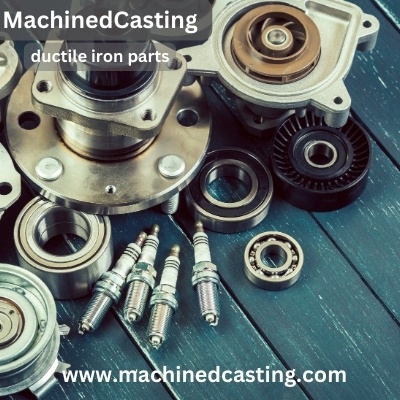Ductile iron, also known as nodular or spheroidal graphite iron, is a type of cast iron known for its high strength, toughness, and ductility. It finds extensive applications across various industries due to its unique combination of properties. In this comprehensive guide, we will explore the properties, applications, and maintenance practices associated with ductile iron parts.
Properties of Ductile Iron:
- Tensile Strength: Ductile iron exhibits superior tensile strength compared to traditional cast irons, making it suitable for applications where high mechanical loads are expected.
- Ductility: Unlike conventional cast irons, ductile iron can undergo significant deformation before failure, making it more resistant to cracking and fracture.
- Impact Resistance: Its ability to absorb impact energy without fracturing makes it ideal for components subjected to dynamic loading conditions.
- Corrosion Resistance: Ductile iron offers good resistance to corrosion, especially when compared to materials like steel, enhancing its durability in harsh environments.
- Machinability: Ductile iron can be easily machined, allowing for the production of intricate parts with tight tolerances.
Applications of Ductile Iron Parts:
- Automotive Industry: Ductile iron is widely used in the automotive sector for manufacturing components such as engine blocks, cylinder heads, and suspension components due to its high strength and wear resistance.
- Construction: Its strength and durability make ductile iron an excellent choice for construction applications, including water and sewerage systems, as well as structural components like manhole covers and pipe fittings.
- Agriculture: Ductile iron parts are extensively used in agricultural machinery and equipment due to their ability to withstand harsh operating conditions and heavy loads.
- Industrial Machinery: Various components in industrial machinery, such as gears, valves, and hydraulic components, are often made from ductile iron due to its mechanical properties and cost-effectiveness.
Maintenance of Ductile Iron Parts:
- Regular Inspection: Periodic visual inspections should be conducted to identify any signs of wear, corrosion, or damage.
- Cleaning: Ductile iron parts should be cleaned regularly to remove dirt, debris, and contaminants that may compromise their performance or appearance.
- Surface Protection: Applying protective coatings or paints can help enhance the corrosion resistance of ductile iron parts, especially when exposed to aggressive environments.
- Lubrication: Lubricating moving parts can reduce friction and wear, prolonging the service life of ductile iron components.
- Repair and Replacement: Any damaged or worn-out ductile iron parts should be repaired or replaced promptly to prevent further deterioration and ensure the continued operation of the equipment.
In conclusion, ductile iron parts offer a unique combination of properties that make them indispensable across various industries. By understanding these properties, applications, and maintenance practices, manufacturers and engineers can effectively utilize ductile iron components to enhance performance, durability, and reliability in their respective fields.


No comments yet